
"The Hilarious World of Pet Sleep: Bizarre Positions That Will Leave You Laughing"
Explore the funniest, strangest, and most bizarre sleeping positions of pets. From contorted cats to sprawled-out dogs, these sleep antics will have you in stitches!
🐶 Pet Star
53 min read · 14, Mar 2025
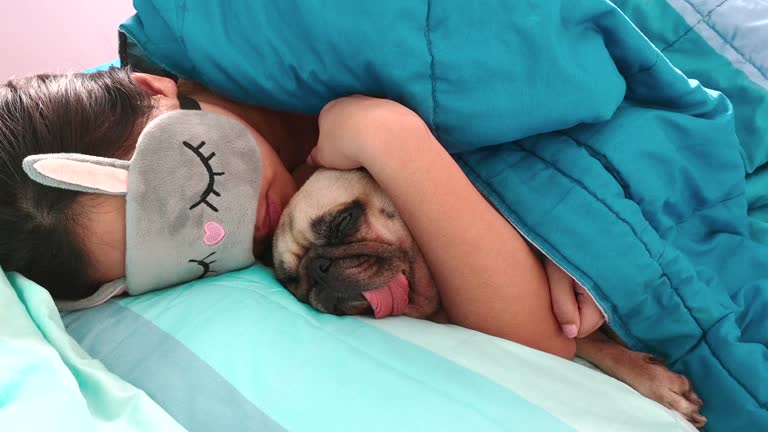
Introduction: The Strange and Hilarious Side of Pet Sleep
Pets, particularly cats and dogs, have a way of turning something as simple as sleep into an art form. As any pet owner will tell you, pets often choose the most bizarre and unexpected positions to sleep in—whether it’s a dog sleeping with its legs straight up in the air or a cat twisted into a pretzel shape. These strange sleeping behaviors provide endless amusement, but they also raise questions about how and why our furry companions choose such peculiar positions.
In this article, we’ll dive into the funniest and most bizarre sleeping positions of pets, explore the reasons behind these quirky behaviors, and discover what these sleep patterns reveal about their personalities and health. Whether you have a pet of your own or simply enjoy the amusing antics of animals, these hilarious and bizarre sleep positions are sure to make you smile.
The Classic Belly-Up: Why Dogs Sleep on Their Backs
The Ultimate Relaxation Position
One of the most common—and hilarious—sleeping positions for dogs is the "belly-up" pose, where they lie flat on their backs with their paws stretched out in all directions. If you’ve ever caught your dog sleeping like this, you’ve probably found it to be both adorable and funny at the same time.
But what does this sleep position actually mean? For dogs, sleeping on their backs with their belly exposed is a sign of total relaxation and trust. This position indicates that the dog feels safe and secure in its environment. They are in a deep, restful state, and their body is fully relaxed.
What This Position Reveals About Your Dog
The belly-up position is often a sign of a confident and content dog. When a dog sleeps in this manner, it means they are comfortable in their environment and feel no need to be on alert. Dogs who exhibit this behavior tend to be more trusting and less anxious. Additionally, the belly-up pose helps cool them down, as their belly is one of the areas with less fur, making it easier for them to regulate their body temperature.
The Most Common Dogs That Sleep Belly-Up
Certain breeds are more likely to sleep in this pose than others. Smaller dog breeds, such as French Bulldogs, Dachshunds, and Shih Tzus, often sleep belly-up due to their playful and affectionate nature. Larger breeds like Golden Retrievers and Labradors may also sleep this way, but they are typically more likely to sleep in positions that allow them to protect their bodies (like lying on their side with their legs tucked).
The Cat Pretzel: Twisted and Contorted Sleep Positions
A Cat's Ability to Fold
While dogs might be content with a straightforward belly-up pose, cats are experts in contorting themselves into all sorts of strange and seemingly impossible sleeping positions. A common example is the "cat pretzel," where the cat curls itself into a perfect knot, with its head, paws, and tail all tucked together in a convoluted heap. This might seem uncomfortable to us, but for cats, it’s just another way to catch some Z’s.
What’s Going on Behind the Cat Pretzel?
The twisted cat sleeping position is a sign of comfort and flexibility. Cats are incredibly flexible creatures, and their ability to curl up into tight spaces is a reflection of their natural instincts. By curling into a tight ball, cats feel protected and secure, as this position makes them feel less vulnerable to potential threats. Cats often sleep in this position when they are in a safe, familiar environment where they don’t feel the need to be overly alert.
Why Cats Love to Sleep in Tight Spaces
Another reason why cats love contorted sleeping positions is that they seek warmth and comfort. Cats have a higher body temperature than humans, and curling up tightly helps them conserve heat. In the wild, a compact sleeping position could also offer protection from predators or harsh weather conditions. Even domesticated cats retain these instincts, which is why you might often find them napping in cozy, enclosed spaces like boxes, laundry baskets, or even underneath the covers.
Dogs in the "Superman" Position: Paws Out and Belly Flat
The Superdog Pose
Another funny sleeping position seen in dogs is the "Superman" pose, where the dog sleeps with its front legs stretched out in front of them, back legs extended behind, and belly flat on the ground. It’s as if they are soaring through the air in flight, making it one of the most unique and amusing sleep positions for pets.
Why Do Dogs Sleep Like Superman?
The Superman position is often observed when dogs are in a light sleep state. It’s a comfortable and cooling position, as the dog’s body is stretched out flat on the ground. It’s also a position that allows them to spring into action if needed—perfect for an alert, active dog who might need to get up quickly and chase after something.
While the Superman pose might seem like a silly sleeping arrangement, it’s usually a sign of a dog that is relaxed but still ready to leap into action at a moment’s notice. The stretched-out posture keeps them cool, which is especially important for breeds with thicker fur.
The "Donut" Position: Cats and Dogs Curling Up
A Universal Sleep Position
One of the most common and universally recognizable sleeping positions for both cats and dogs is the "donut" shape. In this position, pets curl up into a tight ball, often tucking their nose into their tail or paws. This is a default sleeping position for many pets, from small lapdogs to large cats, and it’s often seen as a way for them to get cozy and comfortable.
Why Do Pets Curl Up Into a Donut?
The donut position is not only adorable, but it serves a practical purpose. By curling up into a ball, pets protect their vital organs and conserve body heat, particularly in colder environments. This position also provides a sense of security and comfort. For wild animals, curling up in a tight, protective ball is a way to minimize vulnerability to predators. Even domesticated pets retain this instinctual behavior.
Additionally, curling into a donut shape helps pets stretch their muscles and joints. This position is particularly common when pets are about to rest or sleep for an extended period, and it allows them to rest in a relaxed and secure manner.
Cats and Dogs Who Sleep with Their Tongues Out
A Surprisingly Common Sleep Behavior
Many pet owners have witnessed their pets sleeping with their tongues sticking out. Whether it's a dog lying with its tongue hanging out of the side of its mouth or a cat with its tongue slightly visible while curled up in a ball, this behavior can seem odd but is entirely natural for some pets.
What Does It Mean When Pets Sleep with Their Tongue Out?
For dogs, sleeping with their tongues out is usually harmless. It often happens when a dog is in a deep sleep or if their muscles are too relaxed to hold their tongue inside their mouth. It’s especially common in breeds with shorter snouts, like Bulldogs, Pugs, and Shih Tzus, who may struggle to keep their tongues inside their mouths during sleep.
For cats, it’s much rarer, but it can happen. Cats may occasionally leave their tongue out when they’re in a deep sleep or when they’ve been overly relaxed, and the tongue muscles aren’t being actively engaged. If you notice your pet consistently sleeping with their tongue out, it’s always a good idea to monitor their breathing and consult your veterinarian if you have concerns.
The "Faceplant" Position: When Pets Sleep on Their Faces
An Adorable and Odd Position
Another bizarre and amusing sleep position for pets is when they press their faces directly into the ground, bedding, or even furniture. This "faceplant" position, often seen in dogs, especially puppies, can look both uncomfortable and hilarious, but it is often a sign of deep relaxation.
What’s Behind the Faceplant?
Dogs that sleep with their faces pressed into the ground are typically in a very relaxed state, usually during light sleep. This position can also be a way for pets to keep themselves cool, as the ground offers a cooler surface than a bed or blanket. Some pets may also feel comforted by the pressure against their face, similar to how humans sometimes like to sleep with their face resting on a pillow.
The “Side Sleepers” – Legs Tucked and Belly Down
The Most Relaxed Position for Dogs and Cats
For many pets, especially dogs, sleeping on their sides with their legs tucked neatly underneath their bodies is a common and incredibly peaceful position. This position often allows them to spread out and relax fully, providing comfort while giving them an excellent vantage point if they need to move quickly. Cats, on the other hand, often assume this position in a much more compact form, curling into a more secure position.
Why Do Dogs and Cats Sleep on Their Sides?
When a dog or cat sleeps on their side, it often means that they are in a deep and restful sleep cycle. This position usually indicates that they are feeling completely safe, relaxed, and comfortable. For dogs, sleeping on their sides with their paws tucked under them is a sign of trust in their surroundings, as they aren’t in any defensive or alert position. It’s one of the most comfortable ways for them to sleep, particularly if they want to stretch out their limbs and get the most rest.
This position can also be indicative of a dog or cat’s general health and energy level. It’s more likely to be seen in younger animals or those that feel secure in their environment, with no immediate danger or need to remain alert. For some pets, especially those recovering from an illness or injury, sleeping on their side can offer a bit of relief and comfort, as it can help relieve pressure on any sore muscles or joints.
The “Cocoon” – Cats and Dogs Burrow Under Blankets
The Need for Warmth and Comfort
A common behavior among both dogs and cats, especially during colder months, is burrowing under blankets or other soft coverings. Whether it’s a cozy bed, a pile of laundry, or even the couch cushions, pets often love to create their own little “cocoon” for warmth and security. This position can be quite amusing, as you may find only the tip of your pet’s nose or their tail sticking out from under the blankets, making them look like little creatures hiding in their own cozy caves.
Why Do Pets Love to Burrow?
Burrowing is deeply ingrained in a pet’s instincts. For wild animals, creating a den-like space is a way to stay safe from predators and the elements. Domesticated pets retain this instinct, and they often seek out snug and confined spaces to sleep, particularly when they are trying to stay warm. Cats, being more independent by nature, especially enjoy burrowing because it mimics their natural instincts to find safe, quiet spaces to rest and sleep in peace.
Dogs who burrow are often seeking the same comfort, but they may also be seeking a sense of security. The act of burrowing can create a sense of safety and relaxation, as it provides them with a small, enclosed space where they can feel protected. Additionally, the warmth of the blankets helps to keep them comfortable, particularly for breeds with short fur or smaller body sizes.
The “Snuggled Together” Position – Pets Who Love Company
The Bonding Sleep Position
Sometimes, pets enjoy sleeping in close proximity to each other, and even with their human family members. This position, where multiple pets or pets and their owners curl up together in a single space, is often seen with animals that have strong social bonds. Whether it’s two cats or a dog and a cat snuggled up together, the sleeping arrangement often shows affection and the comfort that comes from being around loved ones.
Why Do Pets Sleep Close to Each Other?
Pets who share a strong bond, whether with other pets or their humans, tend to sleep close to each other as a sign of affection. For dogs and cats, sleeping together is a form of social bonding. Much like how they would huddle together for warmth and safety in the wild, pets have an instinct to stay near those they trust.
For humans, this behavior can also help strengthen the bond between pet and owner. Many pet owners report that their pets love to sleep on or near them, often curling up at the foot of the bed or nestled into their lap. This close contact during sleep reinforces the relationship and can help create a sense of security for the pet. If a pet feels particularly attached to their owner, they will often want to be close during sleep, which is both a comforting and protective instinct.
The “Dog Pile” – Multiple Pets Piling on Top of Each Other
When Pets Want to Share Their Sleep Space
A hilarious and sometimes chaotic sleep behavior involves multiple pets piling on top of one another, forming a "dog pile" or "cat pile" (though, in most cases, this is more common among dogs). In multi-pet households, this behavior can be witnessed when pets seek out their fellow companions for warmth, comfort, or just because they enjoy being close to one another.
What’s the Reason Behind a Dog or Cat Pile?
The “dog pile” behavior is often observed when pets, particularly puppies or kittens, form bonds with each other. Sleeping in a pile is a way to reinforce their social connection, and it’s a form of companionship. It’s also a source of warmth and comfort, as sleeping together keeps them cozy and secure.
In wild animal behavior, such as in wolves or wild cats, members of the pack or group will often sleep close together to ensure mutual safety and warmth. Domesticated pets retain this instinct, so when they sleep in a pile, it is often because they feel safe and supported by the other pets. This is a behavior you’re likely to see in puppies, who love to huddle together as a group, and in kittens, who frequently pile up for warmth.
The “Head Rest” – Pets Who Sleep on Their Humans
When Your Pet Uses You as a Pillow
If you’re a pet owner, you may have woken up to find your dog or cat resting their head on your arm, chest, or even your face. While this may feel a bit invasive, it’s actually a sign of affection and trust. Many pets seek comfort and reassurance from their owners, and using you as a pillow or headrest is their way of feeling safe and close to you.
Why Do Pets Rest Their Heads on Their Humans?
Pets who sleep with their heads on their owners’ bodies do so for several reasons. Firstly, it’s an indication of trust. Your pet feels comfortable and secure with you, and resting on you provides them with the reassurance that they are safe. The physical contact also allows them to feel your warmth, which can be soothing, especially when they are in a restful or light sleep state.
Conclusion:
Pets have a unique and often hilarious way of showcasing their comfort, trust, and personality through their sleeping positions. Whether it’s a dog lying belly-up in full relaxation, a cat contorting into an impossible pretzel shape, or a group of pets forming a cozy pile, each position tells a story about your pet’s mood, instincts, and behavior. While many of these positions might seem odd to us, they are often deeply rooted in the animals’ instincts for safety, comfort, and warmth.
Understanding your pet’s sleeping habits not only gives you a glimpse into their physical and emotional state but also strengthens the bond between you and your furry friend. Pets sleep in ways that make them feel secure, whether it's in the form of a protective curl, a cool Superman pose, or snuggling close to their human companions for comfort. It’s all part of their natural behavior, rooted in their evolution and instincts.
These quirky sleep positions can also provide clues to your pet's health and wellbeing. If your pet suddenly changes its sleep patterns or adopts new sleeping behaviors, it may be an indication of stress, discomfort, or even a health issue. Always keep an eye on any significant changes, and consult with your veterinarian if you have concerns.
So, next time you catch your pet in one of their funny or bizarre sleeping positions, remember that it’s not just adorable—it’s a unique window into their world. Enjoy the humor and comfort that these peculiar behaviors bring into your life!
Q&A Section
Q1: Why do pets sleep in such strange positions?
A1: Pets sleep in bizarre positions as a way to express comfort, security, and trust. These positions often reflect their instinctive behaviors, comfort level with their environment, and sometimes a need for warmth.
Q2: What does it mean when a dog sleeps belly-up?
A2: When a dog sleeps belly-up, it’s a sign that they feel safe, relaxed, and trust their surroundings. It’s a vulnerable position, indicating that the dog is comfortable in their environment.
Q3: Are cats really comfortable when they sleep twisted into a pretzel shape?
A3: Yes! Cats are incredibly flexible, and sleeping in a contorted position helps them conserve body heat and feel secure. It’s instinctive for them to curl up in tight spaces for safety and comfort.
Q4: Why do dogs sleep with their tongue sticking out?
A4: Dogs often sleep with their tongues out when they are in a relaxed state. It can happen when they fall into a deep sleep or if their mouth is too relaxed to keep the tongue inside.
Q5: What does the “Superman” sleep position tell us about a dog?
A5: The “Superman” position shows that the dog is in a light sleep but is still prepared to get up quickly. It’s a comfortable, cool position that helps them stay ready for action.
Q6: Do pets sleep more when they are feeling stressed or sick?
A6: Yes, stress or illness can cause changes in a pet’s sleep patterns. If a pet suddenly sleeps significantly more or less than usual, it’s a good idea to consult a vet to rule out health issues.
Q7: Can pets be affected by sleep disorders?
A7: Yes, pets can have sleep disorders, just like humans. Conditions such as insomnia, excessive sleep, or restlessness can be symptoms of underlying health problems. If your pet’s sleep behavior changes drastically, a vet’s visit is recommended.
Q8: Why do some pets prefer sleeping near their owners?
A8: Pets sleep near their owners because they feel comforted and safe by their presence. This behavior stems from a need for security, warmth, and companionship. It also strengthens the bond between pets and humans.
Q9: Is it normal for my pet to sleep in a pile with other pets?
A9: Yes, it’s common for pets to sleep in piles, especially if they have strong social bonds. It’s a natural behavior for animals to sleep close to one another for warmth, security, and comfort.
Q10: What can I do if my pet's sleeping position seems uncomfortable?
A10: If your pet's sleeping position looks uncomfortable or is causing them pain, it’s important to consult your vet. A change in sleeping posture could indicate joint problems, discomfort, or a medical issue that needs attention.
Similar Articles
Find more relatable content in similar Articles
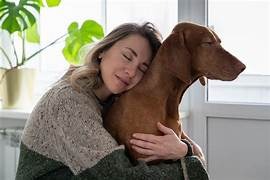
The Growing Trend of Therapy and Emotional Support Ani..
Exploring the remarkable rise .. Read More
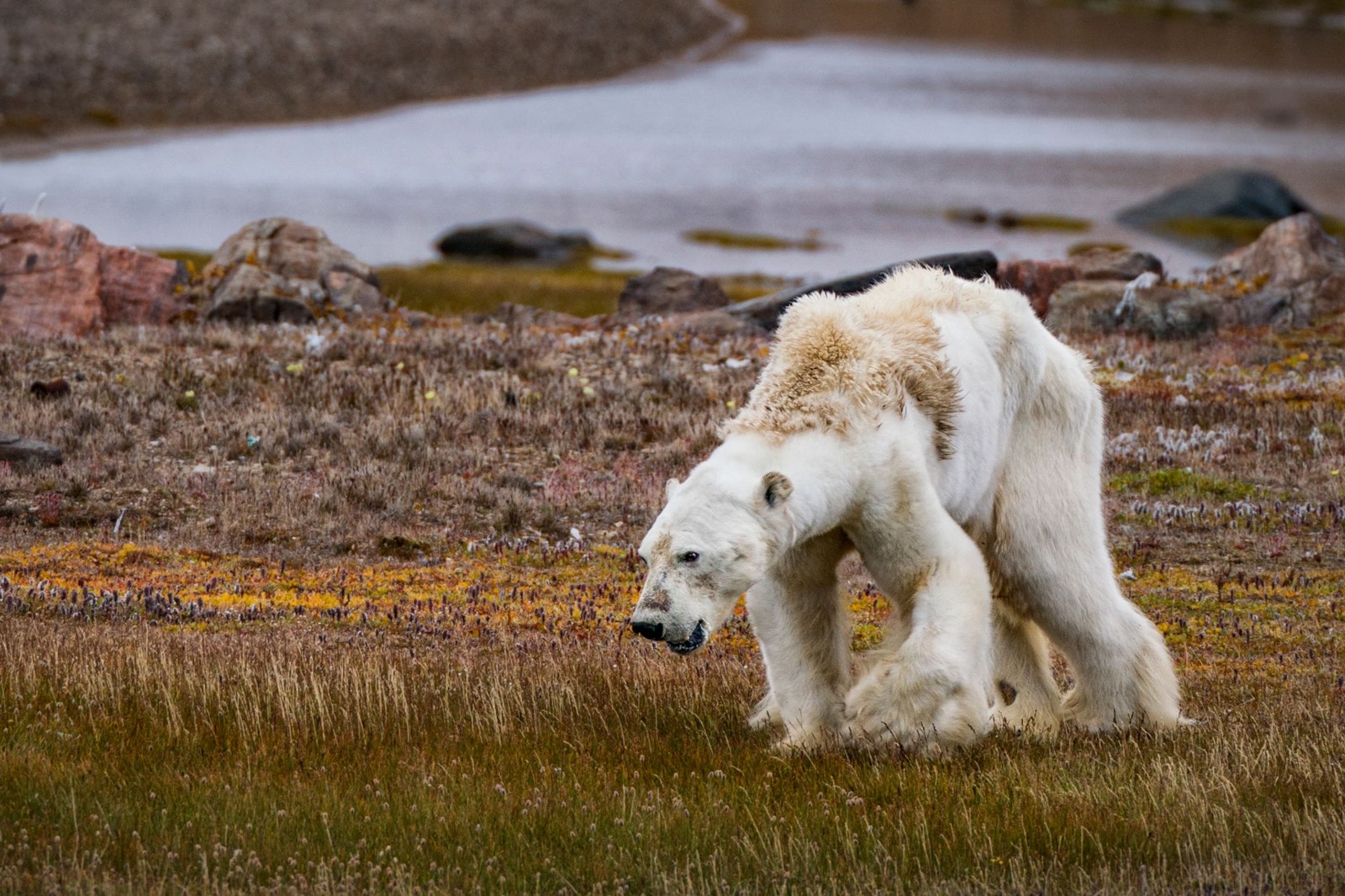
How Climate Change Affects Wild and Domestic Animals...
Climate change is dramatically.. Read More
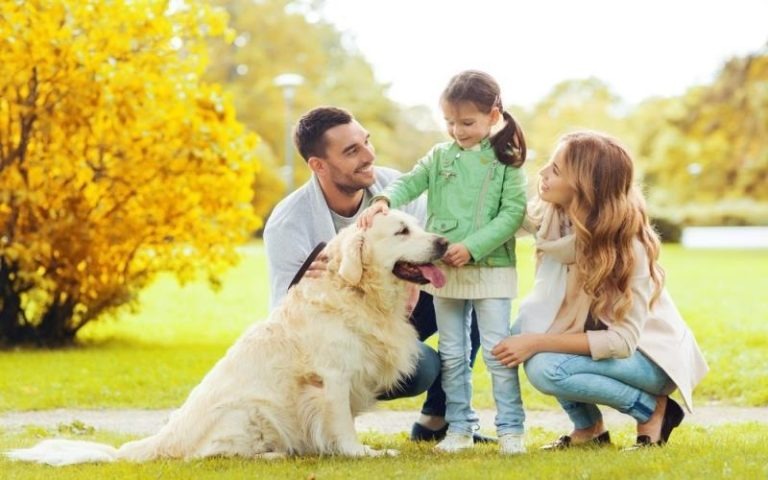
How Pets Strengthen Family Bonds...
Pets are more than just compan.. Read More
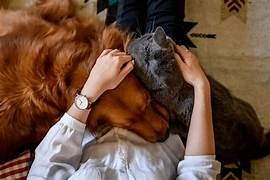
Pets and Mental Health: The Science Behind Emotional H..
Discover the profound impact o.. Read More
Explore Other Categories
© 2024 Copyrights by rPets. All Rights Reserved.